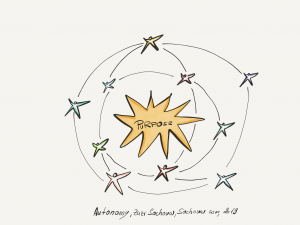It’s easy to assume that a team and a group of individuals are the same thing, but there’s a key difference: intentional collaboration. But there is a fundamental difference. A group of individuals is simply a collection of people working together, often with individual goals and responsibilities. Each person might be working on their own tasks, and while they may share a common purpose, there’s little to no collaboration or interdependence.
On the other hand, a team is a cohesive unit that works together towards a common goal. Teams share knowledge, support each other, and work collaboratively to achieve something greater than the sum of their individual efforts. Team members hold each other accountable, leverage each other’s strengths, and have a collective sense of responsibility.
Teams outperform groups of individuals for several reasons:
Collaboration over competition – Teams thrive on sharing ideas and solving problems together, leading to innovative solutions.
Accountability – Team members depend on each other, which encourages mutual accountability and a stronger commitment to success.
Synergy – Teams combine diverse skills, experiences, and perspectives to tackle challenges more effectively than individuals could on their own.
Teams are essential for fast decision-making, continuous improvement, and delivering high-quality outcomes.
So, let’s have a look. Are you a team or a group of individuals?
Answer the following questions on a scale of 1 to 5 (1 = Not at all, 5 = Always):
-
- Do team members actively collaborate and share ideas?
- Are individual contributions aligned towards a common goal?
- Is there accountability among team members for the success of the team?
- Does the group leverage the diversity of skills within the team?
Scoring:
-
- 16–20: You have a strong team! Collaboration, accountability, and shared goals are in place.
- 11–15: Your group is on the right track but could benefit from more intentional collaboration and alignment.
- 4–10: You have a group of individuals who may need guidance in forming a more cohesive team.
Fostering teamwork is the key to greater efficiency and success. A true team doesn’t just work together; they grow together.


